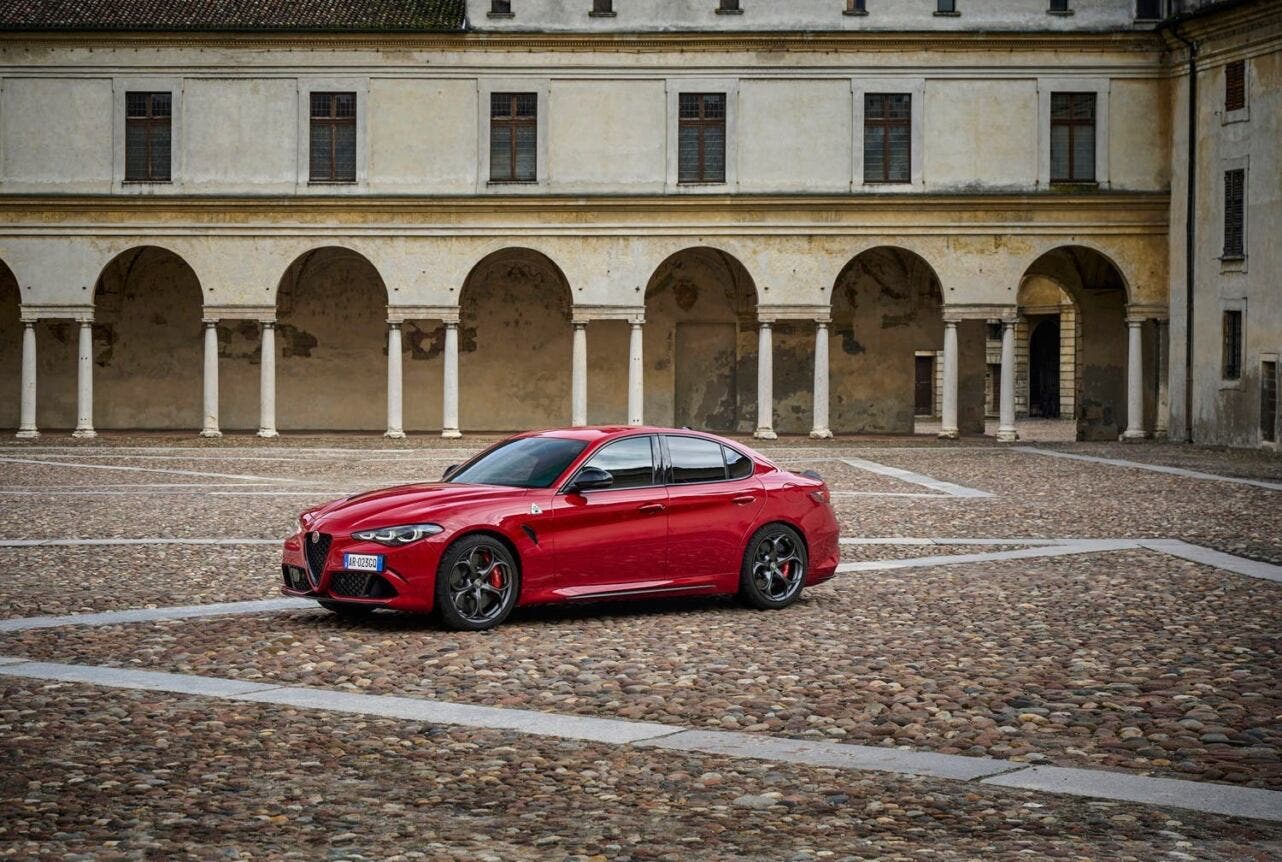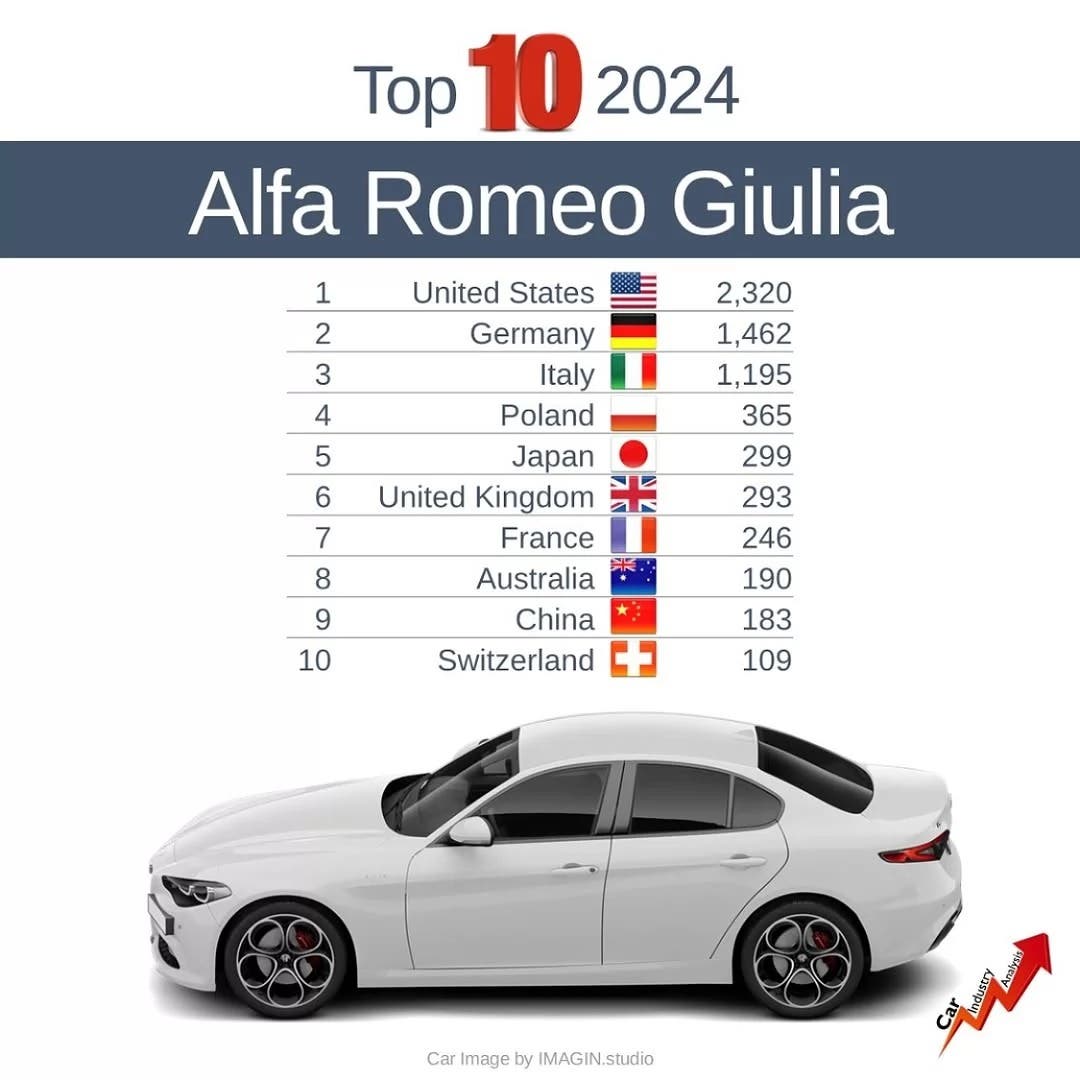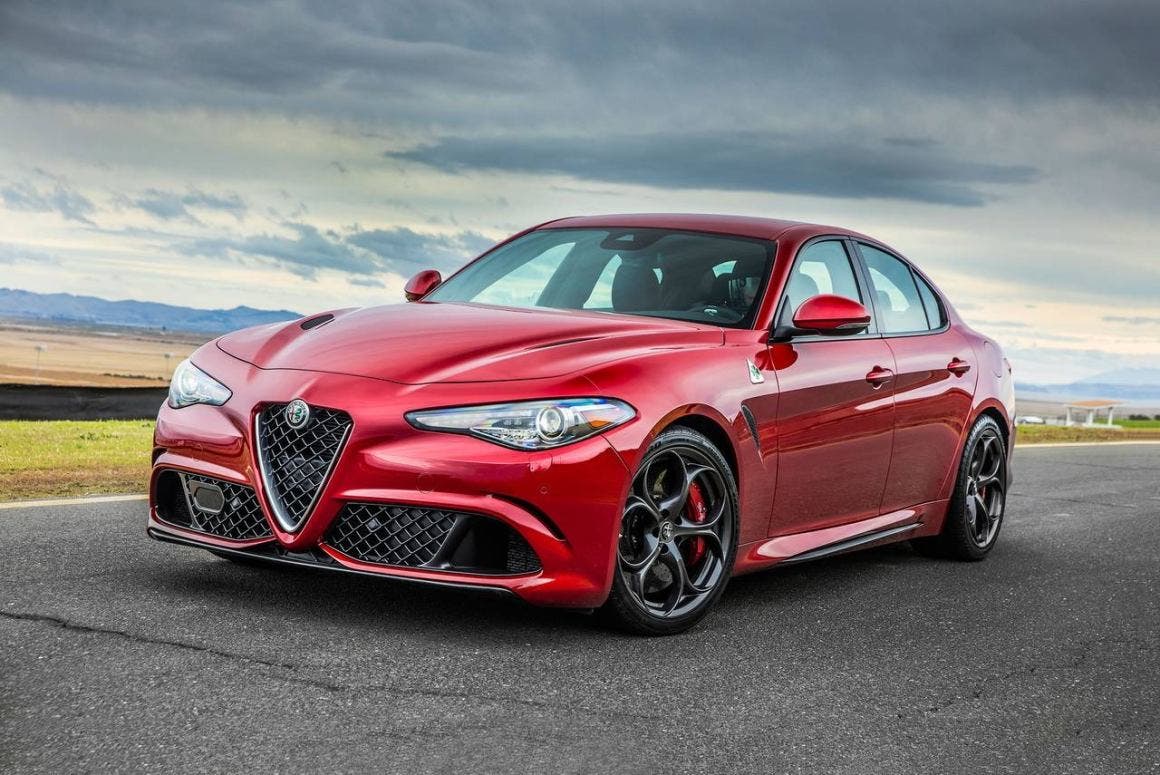The Alfa Romeo Giulia, as we know it today, is approaching the end of its life cycle. The current model will be replaced in 2026 by a new generation that will abandon the classic sedan lines in favor of a fastback design, characterized by a truncated tail and a more aerodynamic style. According to the latest rumors, the design of the future Giulia should be inspired by models like the Audi A6, with more slender and modern proportions.
Alfa Romeo Giulia: more sales in the United States and Germany than in Italy in 2024

Despite its imminent retirement, the Giulia continues to make headlines, but not for the reasons hoped. In its home country, sales are not taking off; in fact, the Italian market is proving less receptive compared to other European countries. Surprisingly, Germany surpasses Italy in the number of registrations, a fact that makes one reflect, considering that the Alfa Romeo Giulia is a Made in Italy car and also intended to represent the excellence of national automotive design and engineering.
According to data provided by Car Industry Analysis for the first months of 2024, the United States leads the global sales ranking with 2,320 units, a result in line with the size of the American market, but still modest for a premium model. Now the situation isn’t any better in the United States either, where the Giulia, along with the Dodge Charger Daytona, ranks among the slowest-selling cars in the country. In second place is Germany, with 1,462 units registered, while Italy stops at 1,195. A result that leaves a bitter taste, especially in light of the fact that the Giulia was created to compete directly with German sedans like the BMW 3 Series and Audi A4.

The German data can be interpreted in several ways. On one hand, it confirms the enduring charm that Alfa Romeo exerts on the German public, historically fond of the Biscione brand. On the other hand, it highlights how in Italy the sedan fails to establish itself, perhaps due to the progressive rise of SUVs and crossovers, which continue to dominate consumer preferences. The economic factor could also weigh in, with a generally higher spending capacity in Germany compared to the Italian market.
2025 could represent the last “full” year of commercialization of the current generation of the Giulia, before the transition to the new model planned for the following year. It remains to be seen whether the Italian market will rediscover this model in its final phases or if it will continue to look elsewhere.
